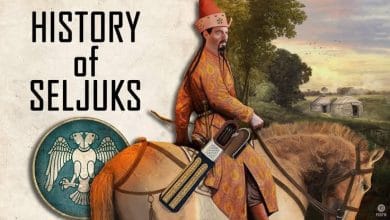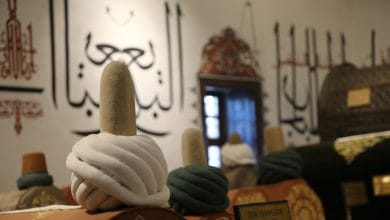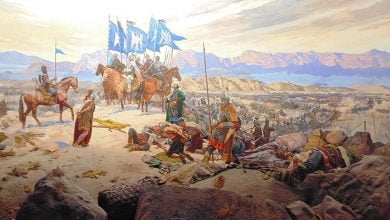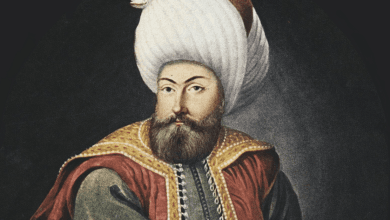Who Wants to Be a Millionaire: The 1 Million TL Question About Turkey’s Presidential Seal
A historic moment unfolded as a contestant faced the 1 million TL question about the 16 stars on Turkey’s Presidential Seal. Discover the correct answer and the history behind this iconic emblem.
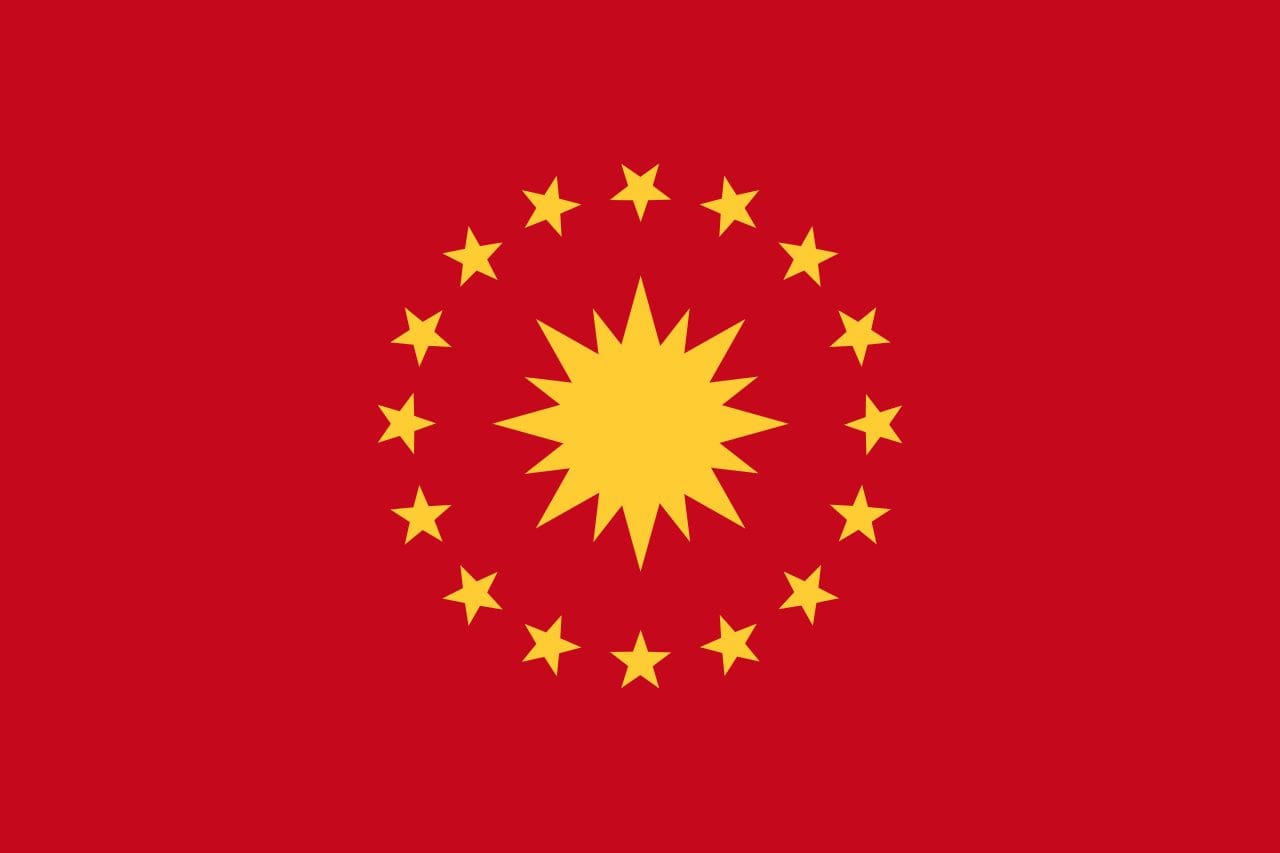
Did You Watch “Who Wants to Be a Millionaire”? Can You Answer the Historic Question?
A historic moment unfolded tonight on ATV’s popular competition show Who Wants to Be a Millionaire?. Contestant Ecesu Ürker, who amazed the audience with her brilliant performance last week, earned the opportunity to answer the 1 million TL question. If she answers correctly, she will make history by proceeding to the coveted 5 million TL question.
The question that left everyone glued to their screens was:
“Which of the 16 Turkish states is not represented by the 16 stars surrounding the sun on the Presidential Flag and Coat of Arms?”
The options were:
- A) Western Hun Empire
- B) Khwarezmshahs
- C) Avar Empire
- D) Anatolian Seljuk State
Do You Know the Correct Answer?
The correct answer is D) Anadolu Selçuklu Devleti (Anatolian Seljuk State).
The Presidential Seal of Turkey features a sun surrounded by 16 stars, each representing one of the 16 Great Turkic Empires in history. The Anatolian Seljuk State is not among these 16 empires, which is why option D is correct.
The contestant chose to withdraw from the competition at this question, later mentioning that she would have selected option A. This decision allowed her to retain her current winnings without risking an incorrect answer.
The Presidential Seal of Turkey
The Presidential Seal of Turkey is an emblem symbolizing the president of Turkey and the Republic itself. At the center of the seal is a 16-pointed sun, representing the Republic of Turkey. Surrounding the sun are 16 five-pointed stars, which symbolize the 16 Great Turkic Empires in history.
![Erdoğan and Abbas with actors representing the 16 Great Turkic Empires (2015)[1]Yıldız Yazıcıoğlu (VOA)](https://osmanonline.me/wp-content/uploads/2025/01/Recep_Tayyip_Erdogan_Mahmoud_Abbas.jpg)
Historical Background
The origins of the Presidential Seal date back to September 1922, during the Turkish War of Independence, when a similar flag was used on the car transporting Mustafa Kemal Atatürk to İzmir. This historic flag is currently displayed in the Anıtkabir Museum in Ankara.
Key milestones in the development of the Presidential Seal include:
- 1925: Official legalization of the Presidential Flag’s characteristics through the Sancak Talimatnamesi law. The seal dimensions were originally 70 cm x 70 cm.
- 1937: The dimensions were reduced to 30 cm x 30 cm.
- 1978: The sun’s rays were adjusted to 16 (8 long and 8 short), representing the 16 Great Turkic Empires.
- 1985: The seal took its current form under a legal amendment.
The 16 Great Turkic Empires
The concept of the 16 Great Turkic Empires, symbolized by the stars, was introduced in 1969 by Akib Özbek and officially associated with the seal in 1985 under President Kenan Evren. Prior to this, the stars were believed to represent medieval Turkish beyliks.
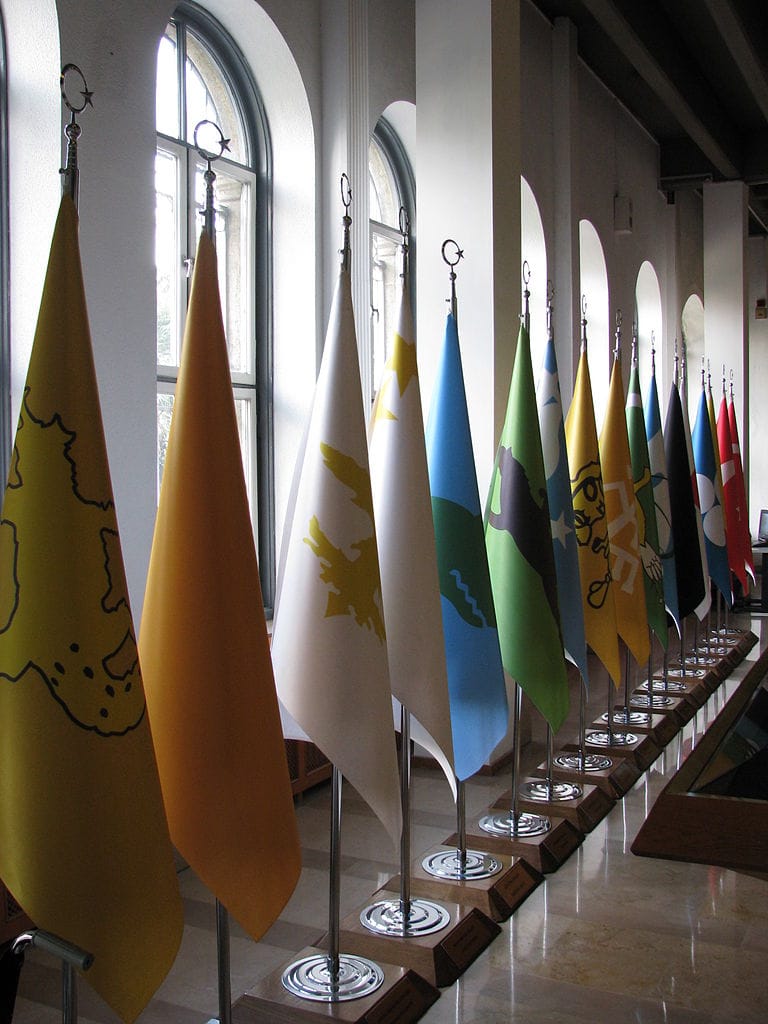
Here are the 16 Great Turkic Empires represented on the Presidential Seal:
- Great Hun Empire (Büyük Hun İmparatorluğu)
- Ruler: Mete Khan
- Time Period: 220 BC – 46 BC
- Western Hun Empire (Batı Hun İmparatorluğu)
- Ruler: Banu
- Time Period: 48–216
- European Hun Empire (Avrupa Hun İmparatorluğu)
- Ruler: Attila the Hun
- Time Period: 375–469
- White Hun Empire (Akhun İmparatorluğu)
- Ruler: Aksonvar
- Time Period: 390–577
- First Göktürk Khaganate (Göktürk İmparatorluğu)
- Ruler: Khagan Bumin
- Time Period: 552–745
- Avar Khaganate (Avar İmparatorluğu)
- Ruler: Khagan Bayan
- Time Period: 565–835
- Khazar Khaganate (Hazar İmparatorluğu)
- Ruler: Khagan Tong Yabgu
- Time Period: 651–983
- Uyghur Khaganate (Uygur Devleti)
- Ruler: Khagan Kutlug Bilge
- Time Period: 745–1369
- Karakhanid Khanate (Karahanlılar)
- Ruler: Bilge Kul Qadir Khan
- Time Period: 840–1212
- Ghaznavid Empire (Gazneliler)
- Ruler: Alp Tegin
- Time Period: 962–1186
- Great Seljuk Empire (Büyük Selçuklu İmparatorluğu)
- Rulers: Chaghri Beg and Tughril Beg
- Time Period: 1040–1157
- Khwarazmian Empire (Harzemşahlar)
- Ruler: Muhammad Khwarazm Shah
- Time Period: 1097–1231
- Golden Horde (Altınordu Devleti)
- Ruler: Batu Khan
- Time Period: 1236–1502
- Timurid Empire (Büyük Timur İmparatorluğu)
- Ruler: Tamerlane (Timur)
- Time Period: 1368–1501
- Mughal Empire (Babür İmparatorluğu)
- Ruler: Babur Shah
- Time Period: 1526–1858
- Ottoman Empire (Osmanlı İmparatorluğu)
- Ruler: Osman I (Founder)
- Time Period: 1299–1923
Measurements of the Presidential Seal
- The current dimensions of the seal are 30 cm x 30 cm.
- The sun has 16 sharp-edged light rays symbolizing the Republic and its historical roots.
Conclusion
Ecesu Ürker’s question on Who Wants to Be a Millionaire not only kept viewers on the edge of their seats but also reminded everyone of the rich history and symbolism behind the Presidential Seal of Turkey. The Khwarezmshahs, while significant in Turkic history, are notably not part of the 16 Great Turkic Empires represented by the stars on the seal.
This iconic seal represents the deep historical roots of Turkey, connecting the modern Republic to its illustrious past.

